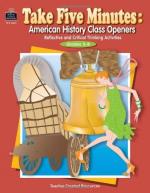|
This section contains 737 words (approx. 3 pages at 300 words per page) |

|
Free Trade v. Protection.
During Jefferson's Embargo and the War of 1812 Americans began to develop, out of necessity, the type of manufacturing that Alexander Hamilton had prized. When the war ended and cheap British manufactured goods flooded American markets, eastern manufacturers cried for protective tariffs that would raise the prices of foreign goods. On the other hand, Southerners and Westerners had less financial interest in manufacturing, and as consumers opposed high tariffs which translated to higher prices. Tariff policy, as much as banking and internal improvements, was central to political debates and caused a split in the Democratic Party.
1816.
The first postwar Congress prepared and passed the first obviously protective tariff in United States history. Pushed through the House by Henry Clay and John C. Calhoun, the Tariff of 1816 increased rates by approximately 25 percent. In contrast to later tariff struggles, southerners and northeasterners actually opposed...
|
This section contains 737 words (approx. 3 pages at 300 words per page) |

|




